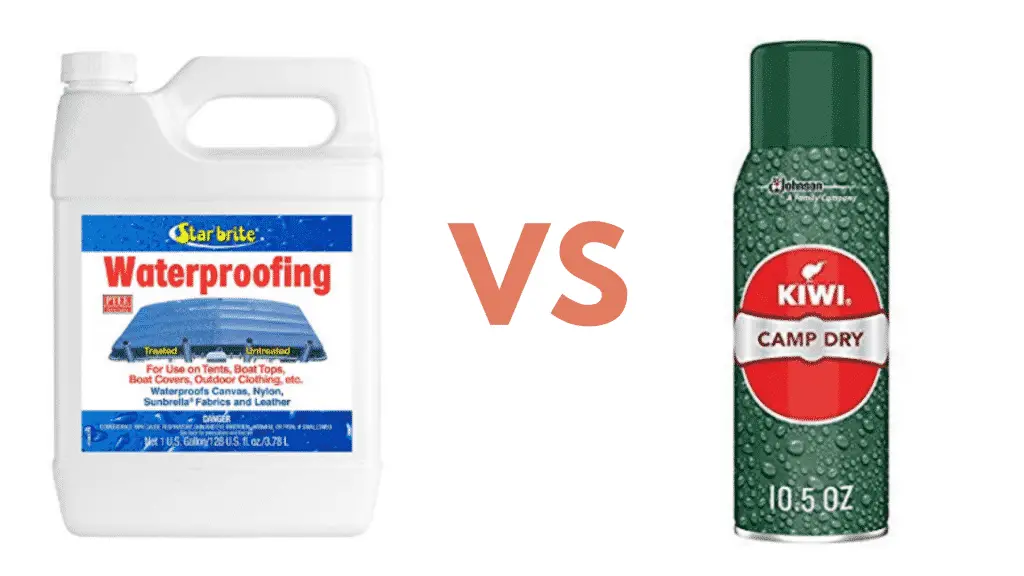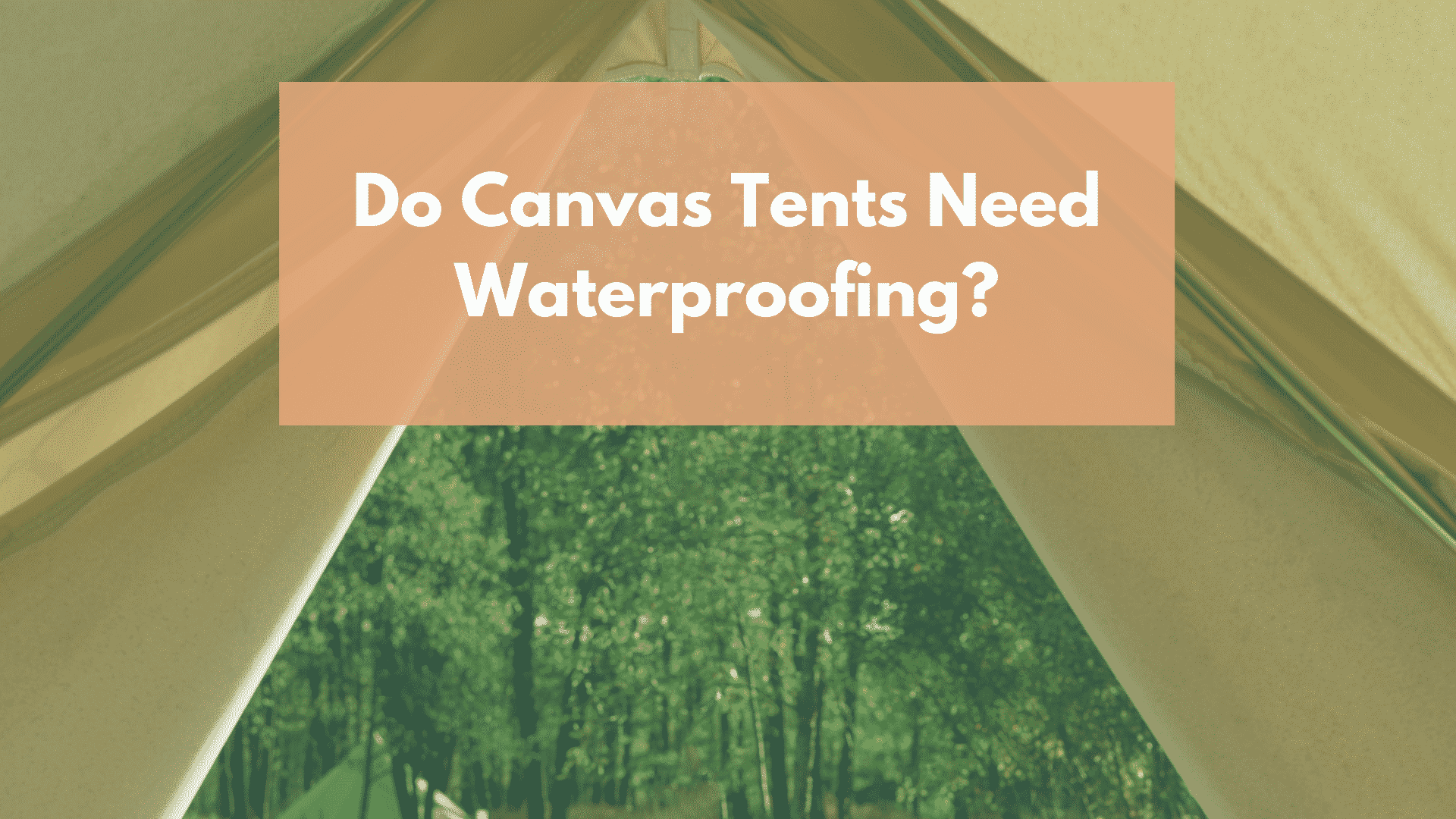For years I struggled with keeping my canvas tents waterproof. They only came out of storage a few times per year(only during the hunting season). Every single season they seemed to get worse. Over time they got so out of hand that I needed to find a solution. So I looked into waterproofing my canvas tents.
Do Canvas Tents Need Waterproofing?
Canvas is an extremely durable material and it does have some natural water resistance. However, during heavy rainstorms water will almost always seep through the fabric.
Even though raw canvas has natural waterproofing properties it isn’t fully waterproof. To fully waterproof your canvas you need to spray it with either a silicone or fluoropolymer based waterproofing spray.
If you don’t waterproof your canvas water is going to seep through resulting in mildew buildup. Once that happens you’ll start to attract mold and mildew. That’s when you start to get that old mildew smell that we’re all familiar with.
There are Different Types of Canvas
Not all canvas is going to be made of the same material. For a long time manufacturers used cotton in their waterproof canvas material. When cotton gets wet the fibers swell sealing the weave, but all those wet fibers tend to attract mildew. Most old canvas tents are going to have a cotton based fabric.
Nowadays manufacturers are coating their canvas in either vinyl coated polyester or acrylic material. Unlike traditional cotton these materials have a tighter weave that’s more water resistant. The only problem is these materials need extra ventilation.
Seasoning a Tent vs Waterproofing
If you’ve recently purchased a canvas tent you’ve probably never heard of seasoning canvas. Seasoning is a process where you repeatedly soak and dry your canvas to seal the micro pinholes in the fabric.
Since most canvas products don’t come waterproof out of the box this needs to be done on new tents. All you do is setup your tent spray it with a hose and let it dry. Repeat the process a few times and your tent should be fairly waterproof.
After a few years you’ll start to get pin leaks and need to apply a silicone based waterproofing product.
How to Waterproof Your Tent

People who camp in a canvas tent are going to need to waterproof their gear. It doesn’t matter how durable your tent is it will eventually leak in a rainstorm. Over time the material is going to wear down and you’ll have to apply a waterproofing product.
Waterproofing your canvas tent without sealing up the fibers is easier said than done. The key is using a waterproofing spray that doesn’t affect the breathability of the fabric. Those products will work to seal your tent, but it’s going to prevent your tent from breathing. You’ll end up with lots of condensation if you don’t properly ventilate.
There are several waterproofing methods that you can use to waterproof your canvas tent. The easiest way to waterproof your tent is with a canvas preservative that you can find at any home improvement store.
What Products Do You Need?
The product you need to buy is entirely dependent on the size of your tent. On larger tents you need to get a big bottle of concentrate that can be rolled or sprayed on.(this is what I use) On a smaller tent you can probably get away with a single bottle of Kiwi Camp Dry.
Other than the waterproofing spray all you need is a ladder, spray bottle, paint brush, cleaning supplies and a few hours to spare.
- Setup your tent on a flat even surface in a sunny spot in your yard.
- Clean off your canvas tent using soap and water. I normally brush it down with a hard bristle brush and hose it off. For especially stubborn mildew buildup you might want to use a pressure washer. Just make sure you stay away from the tent to avoid ripping through the fabric.
- Spray on your canvas waterproofing spray evenly coating the entire tent. Make sure you cover all the seams and get in all those tiny folds.
- Use a paint brush to double up on all the seams. Make sure they are fully saturated.
- Leave your tent to dry in the sun and repeat the process until you feel satisfied.
- Hose off the tent and watch water bead up on the surface.




